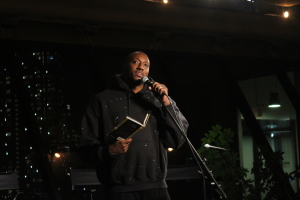'Important and exciting' ritual bath from Jesus' time discovered at the Garden of Gethsemane

The remains of a 2,000-year-old ritual bath have been discovered at Gethsemane — the place where Jesus Christ prayed before He was betrayed by Judas — marking the first archeological evidence linking the pilgrimage site to the New Testament era.
The Times of London reports that archaeologists working in collaboration with the Israel Antiquities Authority unearthed the bath, along with the steps that would have led down into the water, at the foot of the Mount of Olives, near the modern church at Gethsemane.
According to the New Testament Gospels, Jesus spent His final night at Gethsemane following Last Supper. It was there that He prayed, accepted His eventual betrayal and execution, and was arrested by the Temple guards of the Sanhedrin. “Gethsemane” means “olive press” in Hebrew.
It is not uncommon for archeologists to uncover ritual baths, many of them discovered inside settlements for public use, near cemeteries, or in agricultural areas.
However, the ritual bath, or “mikveh,” discovered at Gethsemane marks the first time there has been any physical archaeological evidence at the traditional site connecting it to the New Testament era, Israel Antiquities Authority’s Jerusalem district head Amit Re’em told The Times of Israel.
He called the discovery "important and exciting."
“It is not from the mikveh that we are so excited, rather the interpretation, the meaning, of it. Because despite there being several excavations in the place since 1919 and beyond, and that there were several findings — from the Byzantine and Crusader eras, and others — there has not been one piece of evidence from the time of Jesus. Nothing! And then, as an archaeologist, there arises the question: Is there evidence of the New Testament story, or maybe it happened elsewhere?” said Re’em.
Experts believe that the bath was used to clean workers before they operated an oil press in the garden, and by those climbing the hill to pray. They suggested that Jesus might have purified Himself in the ritual bath before walking up the Mount of Olives to pray.
“According to the Jewish law, when you are producing wine or olive oil, you need to be purified,” said Re’em. “So there is a high probability that during the time of Jesus, at this place was an oil press.”
Re’em said the next step for researching the bath will be to take plaster samples and send them to micro-archaeologists who will look for olive pollen grains and other substances. If these are discovered, then the “connection to oil production will become more certain,” he said.
Fr. Francesco Patton, Custos of the Holy Land, told the Times that Gethsemane is one of the most important sanctuaries in the Holy Land.
“In this place the tradition remembers the confident prayer of Jesus and [H]is betrayal and because every year millions of pilgrims visit and pray in this place,” he said. “Even the latest excavations conducted on this site have confirmed the antiquity of the Christian memory and tradition linked to the place, and this is very important for us and for the spiritual meaning connected with the archaeological findings.”
In addition to the 2,000-year-old bath, the team also uncovered the remains of a 1,500-year-old Byzantine-period church and a large monastery that would have been used by pilgrims in the time of the Crusades.
A Greek inscription was found on the floor of the church, reading, “for the memory and repose of the lovers of Christ God who have received the sacrifice of Abraham, accept the offering of your servants and give them remission of sins. Amen.”
According to an IAA press release, the church was used from circa sixth century CE through the eighth century.
“It is interesting to see that the [Byzantine-era] church was being used, and may even have been founded, at the time when Jerusalem was under Muslim rule, showing that Christian pilgrimages to Jerusalem continued during this period as well,” said IAA excavation director David Yeger.



























